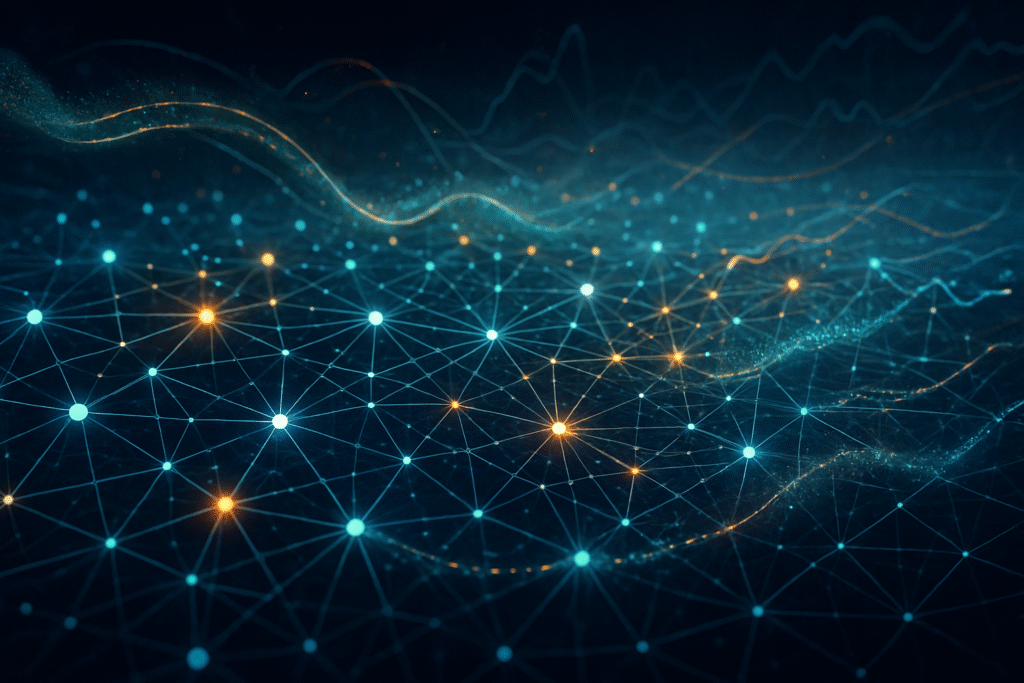
In an era dominated by instantaneous digital communication, the flow of information across social networks has become a complex, often chaotic, phenomenon. From viral news stories to rapidly spreading rumors and evolving public opinions, understanding these dynamics is paramount. A burgeoning interdisciplinary field, often dubbed "sociophysics," is leveraging the rigorous mathematical frameworks of statistical physics to model and predict the intricate dance of information within our interconnected digital world. This approach is transforming our qualitative understanding of social behavior into a quantitative science, offering profound insights into the mechanisms that govern what we see, believe, and share online.
This groundbreaking research reveals that social networks, despite their human-centric nature, exhibit behaviors akin to physical systems. By treating individuals as interacting "particles" and information as a diffusing "state," scientists are uncovering universal laws that dictate how information propagates, coalesces, and sometimes fragments across vast populations. The immediate significance lies in its potential to equip platforms, policymakers, and the public with a deeper comprehension of phenomena like misinformation, consensus formation, and the emergence of collective intelligence—or collective delusion—in real-time.
The Microscopic Mechanics of Macroscopic Information Flow
The application of statistical physics to social networks provides a detailed technical lens through which to view information spread. At its core, this field models social networks as complex graphs, where individuals are nodes and their connections are edges. These networks possess unique topological properties—such as heterogeneous degree distributions (some users are far more connected than others), high clustering, and small-world characteristics—that fundamentally influence how news, rumors, and opinions traverse the digital landscape.
Central to these models are adaptations of epidemiological frameworks, notably the Susceptible-Infectious-Recovered (SIR) and Susceptible-Infectious-Susceptible (SIS) models, originally designed for disease propagation. In an information context, individuals transition between states: "Susceptible" (unaware but open to receiving information), "Infectious" or "Spreader" (possessing and actively disseminating information), and "Recovered" or "Stifler" (aware but no longer spreading). More nuanced models introduce states like "Ignorant" for rumor dynamics or account for "social reinforcement," where repeated exposure increases the likelihood of spreading, or "social weakening." Opinion dynamics models, such as the Voter Model (where individuals adopt a neighbor's opinion) and Bounded Confidence Models (where interaction only occurs between sufficiently similar opinions), further elucidate how consensus or polarization emerges. These models often reveal critical thresholds, akin to phase transitions in physics, where a slight change in spreading rate can determine whether information dies out or explodes across the network.
Methodologically, researchers employ graph theory to characterize network structures, using metrics like degree centrality and clustering coefficients. Differential equations, particularly through mean-field theory, provide macroscopic predictions of average densities of individuals in different states over time. For a more granular view, stochastic processes and agent-based models (ABMs) simulate individual behaviors and interactions, allowing for the observation of emergent phenomena in heterogeneous networks. These computational approaches, often involving Monte Carlo simulations on various network topologies (e.g., scale-free, small-world), are crucial for validating analytical predictions and incorporating realistic elements like individual heterogeneity, trust levels, and the influence of bots. This approach significantly differs from purely sociological or psychological studies by offering a quantitative, predictive framework grounded in mathematical rigor, moving beyond descriptive analyses to explanatory and predictive power. Initial reactions from the AI research community and industry experts highlight the potential for these models to enhance AI's ability to understand, predict, and even manage information dynamics, particularly in combating misinformation.
Reshaping the Digital Arena: Implications for AI Companies and Tech Giants
The insights gleaned from the physics of information spread hold profound implications for major AI companies, tech giants, and burgeoning startups. Platforms like Meta (NASDAQ: META), X (formerly Twitter), and Alphabet (NASDAQ: GOOGL) (NASDAQ: GOOG) stand to significantly benefit from a deeper, more quantitative understanding of how content—both legitimate and malicious—propagates through their ecosystems. This knowledge is crucial for developing more effective AI-driven content moderation systems, improving algorithmic recommendations, and enhancing platform resilience against coordinated misinformation campaigns.
For instance, by identifying critical thresholds and network vulnerabilities, AI systems can be designed to detect and potentially dampen the spread of harmful rumors or fake news before they reach epidemic proportions. Companies specializing in AI-powered analytics and cybersecurity could leverage these models to offer advanced threat intelligence, predicting viral trends and identifying influential spreaders or bot networks with greater accuracy. This could lead to the development of new services for brands to optimize their messaging or for governments to conduct more effective public health campaigns. Competitive implications are substantial; firms that can integrate these advanced sociophysical models into their AI infrastructure will gain a significant strategic advantage in managing their digital environments, fostering healthier online communities, and protecting their users from manipulation. This development could disrupt existing approaches to content management, which often rely on reactive measures, by enabling more proactive and predictive interventions.
A Broader Canvas: Information Integrity and Societal Resilience
The study of the physics of news, rumors, and opinions fits squarely into the broader AI landscape's push towards understanding and managing complex systems. It represents a significant step beyond simply processing information to modeling its dynamic behavior and societal impact. This research is critical for addressing some of the most pressing challenges of the digital age: the erosion of information integrity, the polarization of public discourse, and the vulnerability of democratic processes to manipulation.
The impacts are far-reaching, extending to public health (e.g., vaccine hesitancy fueled by misinformation), financial markets (e.g., rumor-driven trading), and political stability. Potential concerns include the ethical implications of using such powerful predictive models for censorship or targeted influence, necessitating robust frameworks for transparency and accountability. Comparisons to previous AI milestones, such as breakthroughs in natural language processing or computer vision, highlight a shift from perceiving and understanding data to modeling the dynamics of human interaction with that data. This field positions AI not just as a tool for automation but as an essential partner in navigating the complex social and informational ecosystems we inhabit, offering a scientific basis for understanding collective human behavior in the digital realm.
Charting the Future: Predictive AI and Adaptive Interventions
Looking ahead, the field of sociophysics applied to AI is poised for significant advancements. Expected near-term developments include the integration of more sophisticated behavioral psychology into agent-based models, accounting for cognitive biases, emotional contagion, and varying levels of critical thinking among individuals. Long-term, we can anticipate the development of real-time, adaptive AI systems capable of monitoring information spread, predicting its trajectory, and recommending optimal intervention strategies to mitigate harmful content while preserving free speech.
Potential applications on the horizon include AI-powered "digital immune systems" for social platforms, intelligent tools for crisis communication during public emergencies, and predictive analytics for identifying emerging social trends or potential unrest. Challenges that need to be addressed include the availability of granular, ethically sourced data for model training and validation, the computational intensity of large-scale simulations, and the inherent complexity of human behavior which defies simple deterministic rules. Experts predict a future where AI, informed by sociophysics, will move beyond mere content filtering to a more holistic understanding of information ecosystems, enabling platforms to become more resilient and responsive to the intricate dynamics of human interaction.
The Unfolding Narrative: A New Era for Understanding Digital Society
In summary, the application of statistical physics to model the spread of news, rumors, and opinions in social networks marks a pivotal moment in our understanding of digital society. By providing a quantitative, predictive framework, this interdisciplinary field, powered by AI, offers unprecedented insights into the mechanisms of information flow, from the emergence of viral trends to the insidious propagation of misinformation. Key takeaways include the recognition of social networks as complex physical systems, the power of epidemiological and opinion dynamics models, and the critical role of network topology in shaping information trajectories.
This development's significance in AI history lies in its shift from purely data-driven pattern recognition to the scientific modeling of dynamic human-AI interaction within complex social structures. It underscores AI's growing role not just in processing information but in comprehending and potentially guiding the collective intelligence of humanity. As we move forward, watching for advancements in real-time predictive analytics, adaptive AI interventions, and the ethical frameworks governing their deployment will be crucial. The ongoing research promises to continually refine our understanding of the digital current, empowering us to navigate its complexities with greater foresight and resilience.
This content is intended for informational purposes only and represents analysis of current AI developments.
TokenRing AI delivers enterprise-grade solutions for multi-agent AI workflow orchestration, AI-powered development tools, and seamless remote collaboration platforms.
For more information, visit https://www.tokenring.ai/.





